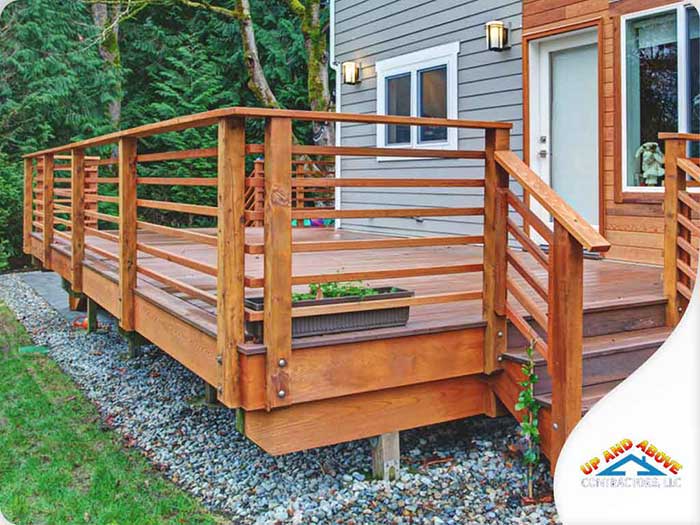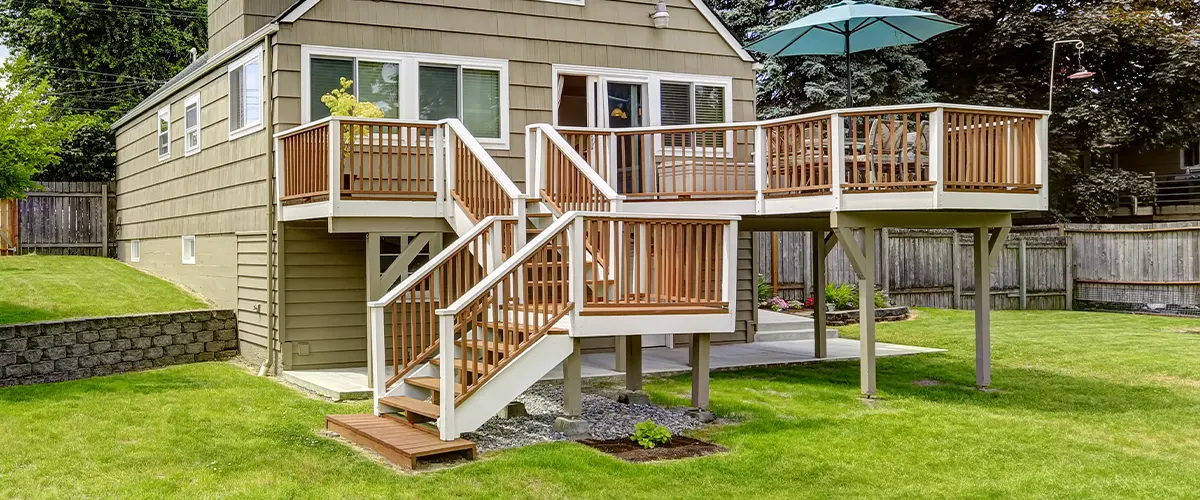Structure from the Ground Up: The Ultimate Overview to Designing and Putting Up Deck Footings
Professional Tips for Installing Deck Footings to Assistance Your Outdoor Area
When it concerns constructing a deck, one of the most crucial aspects to think about is the installment of proper grounds. These footings are the structure whereupon your outside room will relax, giving stability and support for many years ahead. What exactly does it take to set up deck grounds correctly? In this discussion, we will certainly explore skilled suggestions and strategies that can assist make sure a long lasting and successful deck setup. From picking the ideal sort of grounds to staying clear of usual errors, we will offer you with the understanding and understandings you require to with confidence get started on your deck-building journey. Let's dive right in and uncover the key to a solid and durable exterior room.
Value of Appropriate Deck Footings
Proper deck grounds are essential for guaranteeing the security and durability of your outdoor area. Without strong and effectively installed footings, your deck may end up being unstable, leading to security dangers and expensive fixings.

Along with security, correct deck grounds additionally add to the durability of your outdoor space (Deck Footings). Grounds that are developed and constructed to hold up against the elements and soil problems in your location will certainly aid protect against the deck from clearing up or changing in time. By making sure the footings are correctly sized and set up, you can decrease the risk of damage to the deck framework, expanding its life-span and reducing the demand for pricey repair work or substitutes

Choosing the Right Kind of Footings
When selecting the appropriate sort of footings for your deck, it is essential to consider aspects such as soil problems, neighborhood structure codes, and the general style of your outdoor area. The kind of footing you choose will play a critical duty in making sure the security and longevity of your deck.
One typical type of footing is the concrete footing. Concrete grounds appropriate for many dirt problems and give superb support for decks. They are typically installed below the frost line to stop changing and clearing up due to cold and thawing cycles. An additional choice is helical piers, which are optimal for areas with unstable soil or high water tables. These piers are screwed right into the ground and give solid support for the deck.
Sometimes, you might need to make use of specific footings, such as heap grounds or deep structures, if you are building a multi-level or large deck. These grounds are created to disperse the weight of the deck over a bigger location, ensuring stability and avoiding sinking or clearing up.
Before picking a kind of ground, it is important to speak with local building regulations and laws to make sure conformity. In addition, consider the design and meant use your outside area. Elements such as the dimension, form, and load-bearing needs of your deck will affect the kind of footing that is most appropriate.
Preparing the Ground for Footing Setup
To properly prepare the ground for footing setup, it is important to assess the soil conditions and take required steps to make sure security and longevity of the deck. The first step is to dig deep into the area where the footings will certainly be set up.
As soon as the area has been dug deep into, the following step is to compact the dirt. This can be done utilizing a plate compactor or by utilizing a hand tamper. Compacting the dirt aids to check this site out get rid of any kind of gaps or air pockets, which can lead to clearing up and instability gradually.
After condensing the dirt, it is essential to lay a layer of crushed rock or crushed rock at the end of the excavation. This will certainly offer drain and aid to stop water from merging around the grounds, which can result in disintegration and instability.
Step-by-Step Guide to Putting Up Deck Footings
After effectively preparing the ground for footing installation, the following action is to begin the procedure of mounting deck footings. This detailed overview will provide you with a clear understanding of exactly how to set up deck footings for your outside area.
Identify the area: Start by marking the placements of the deck footings using risks and string. Guarantee that the areas straighten with the style and design of your deck.
Dig the openings: Use a message hole digger or an auger to dig the holes for the grounds. The deepness and diameter of the openings should be in accordance with local building regulations and the specific needs of your deck design.
Level the openings: Make use of a degree to make certain that the openings are dug to the correct deepness and are level with each various other. (Deck Footings)
Include gravel: Area a layer of gravel at the end of each hole to improve drainage and prevent the timber from rotting.
Insert the footings: Position the grounds right into the openings, seeing to it they are level and plumb. Make use click reference of a degree and a gauging tape to ensure accuracy.
Protect the grounds: Pour concrete into the openings around the grounds, filling them to the top. Use a message level to make sure the grounds continue to be level as the concrete collections.
Permit time for treating: Allow the concrete treatment according to the supplier's instructions prior to continuing with the deck building and construction.
Typical Errors to Prevent During Footing Installation
One vital aspect to think about during the installment of deck footings is avoiding typical blunders that can endanger the security and durability of your outside space. While deck footings may seem like a easy and uncomplicated component of the construction process, overlooking specific factors can cause costly fixings and prospective safety and security dangers down the line.

In addition, overlooking to mount appropriate water drainage measures can cause water to build up around the grounds, resulting in rot, decay, and the eventual weakening of the deck's structure. Moreover, utilizing the wrong kind of footing product or falling short to properly safeguard the grounds can compromise their architectural honesty.
To prevent these mistakes, it is necessary to speak with a specialist or follow industry standards to ensure appropriate ground installment. By doing so, you can ensure the stability and long life of your outside space, providing a risk-free and satisfying setting for several years to come.
Conclusion
In verdict, setting up appropriate deck footings is vital for the stability and long life of your outside space. By choosing the best type of footings and adequately preparing the ground, you can guarantee a solid foundation for your deck. Complying with a detailed overview and preventing typical mistakes throughout footing installation will certainly additionally enhance the sturdiness and security of your deck.
Correct deck footings are vital for guaranteeing the security and durability of your outdoor area. The footings serve as a link between the ground and the deck, allowing the weight of the deck and its passengers to be spread equally into the soil.One usual kind of ground is the concrete footing. Place the grounds: Place read what he said the footings into the openings, making sure they are level and plumb. Protect the footings: Pour concrete into the openings around the grounds, loading them to the top.